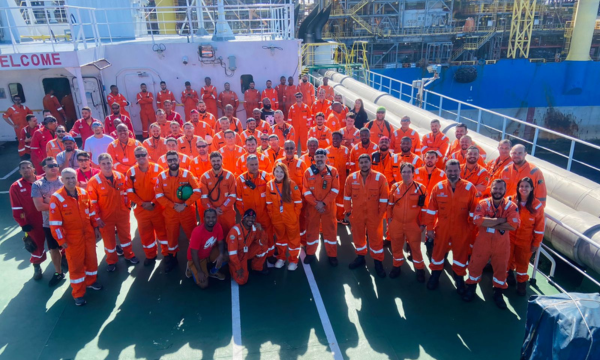These last years have been remarkable for the industrial resumption of both maritime and offshore sectors after a long period of stagnation. And that was only possible thanks to fleet modernization, as well as the ordering of production units, drilling rigs, ships, and many other vessels and resources, all of which mainly led by Petrobras since the pre-salt layer was discovered.
Such facts have been pointed out in a study about the maritime industry renaissance, carried out by the Brazilian Institute for Applied Economic Research (IPEA).
According to the Economic Infrastructure Coordinator, Carlos Campos Neto, as cited in the study above, the maritime and offshore industry is a productive sector that has become part of the growth figures in the country.
The expansion of about 19.5% a year between 2000 and 2012, coupled with investments exceeding R$ 150 billion, have contributed to strengthen this sector in the country.
Nevertheless, there are still many challenges making it hard for this market to grow stronger beyond the Brazilian border, as follows.
Planning and Management
Management and planning-related problems in the largest shipyards, lack of skilled labor, and technological backwardness are but some of the latent obstacles for the Brazilian Marine Engineering to overcome in order to reach the desired international competitiveness.
This happens because—in addition to the high costs involved—there is interference scheduling tasks, planning building works, and meeting deadlines, factors implying a lack of economic return for new investments and huge expenses for the operator.
The lack of skilled labor
“Workers left in the lurch: thoughts on the shipbuilding labor market in the Rio de Janeiro Metropolitan Area,” an article written by Claudiana Guedes de Jesus and Robson Dias da Silva, states that it is more and more common to see the shipyard staff working as shipbuilders, thus becoming the vital link in the chain and depending on upstream suppliers, especially the steel industry, ship parts, and project offices.
However, even when there are many jobs, the hiring requirements, due to their complexity, are high. In other words: production requires several specializations and, in addition to technical training, experience is a priority.
Supply chain integration
There we have another aspect that deserves attention, after all, both being able to innovate and learning through the technology and the production of more and more efficient vessels make it even more effective to integrate with suppliers and influence the strengthening of competitiveness within the naval industry.
How to overcome these challenges?
When it comes to the lack of management and planning, developing standardized projects for production systems is a solution that could have shipyards become more productive and efficient.
As for the shortage of skilled labor, investments in education and training are a way of having employees become technically qualified, seeking to adapt human resources to the ongoing demand of the sector. It will thus be possible to improve processes, reduce failures, and reduce costs in the national industry.
Adopting best practices is mandatory, for those make the integration of the supply chain easier in the main strategic points where this market operates and, then, competitive performance in the naval industry improves as a consequence.
Foreseeing demand is also important in order to carry an adequate stock, to monitor performance indicators, and to reduce bureaucracy along distribution chains.Proper Marine seeks to qualify its team to provide the market with new talents. Go to our website right now and have a look at the available jobs in “Careers.”






